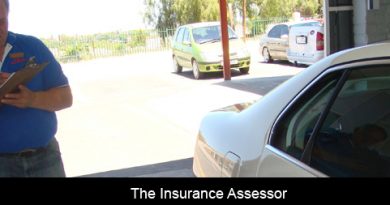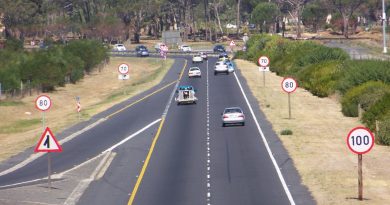The ABC of insurance
Adulting, conventional wisdom holds, is hard work – paying bills, being responsible and having to perform other humdrum tasks would put anyone off wanting to be a grown-up.
But there is no avoiding growing up … and everyone, at some stage, has to get to grips with expenses and income, insurance, mortgages and interest rates whether they like it or not.
Fortunately for the young (and not-so-young) who are anxious about adulting, there is relief available: short-term insurer MiWay has developed a glossary of insurance for beginners.
The glossary is intended to take the pain out of understanding short-term insurance and ensure all wannabe (or not wannabe) adults understand what they need to do to protect their car, cell phones and other possessions.
So, what is insurance and what do you need to know:
“I” stands for Insured value, the amount you choose to insure your car, possessions or house for.
It also stands for Inventory, a list of the items or personal belongings you have in your home or flat. An inventory – like the one available at https://www.miway.co.za/site_files/documents/home-contents-inventory.pdf. – helps you calculate the value of your personal belongings to make sure you have the right kind and amount of insurance.
“N” stands for Non-disclosure. If you omit information essential for your insurer to properly assess your risk, you run the risk of your claim being rejected.
“S” stands for Short-term insurance, which is insurance you take out on your possessions such as your house, car, cell phone, furniture etc against loss due to events such as fire, burglary or damage.
It also stands for Service provider. Insurance companies select external service providers to provide services such as towing, panel beating, plumbing and locksmithing. It is important that you only use service providers that are approved by your insurance provider to avoid unnecessary and unauthorised costs.
And, “S” also stands for Standard features. Cars are built using a standard mould/template and these templates include stock standard features such as radios, aircons and central locking.
Insurers cover the car according to its stock standard template and any optional extras (sunroof, metallic paint, mags, tow bar, etc.) need to be specified on your insurance policy to ensure you enjoy cover for these features.
“U” is for Under-insured. Being underinsured is when your insurance cover – what your insurance policy will payout in the case of a loss or damage and subsequent claim – is less than what it would cost to replace the lost items. It is therefore vital to ensure you are never under-insured or you will be out of pocket when submitting a claim.
“R” is for replacement value, what it will cost you to replace your vehicle, or your household contents with new items. It is generally recommended that you insure your home contents for the replacement value.
It also stands for the retail value of your car, what it would cost you to replace your car in the event that it is damaged or stolen.
“R” is also for regular driver. This is the person who drives the insured car most often in any monthly period. An insurance premium is based on the driver’s risk profile and this is why it is imperative to note the correct regular driver on your insurance policy. If someone other than the regular driver starts driving the car more often in any monthly period, you need to let your insurer know immediately as this may affect your cover and premium.
“A” is for All-Risk insurance, which covers you for loss, theft or damage to items you normally carry with you outside your home such as your cell phone, tablet and jewellery.
When taking all-risk insurance cover, most insurers require you to specify each item that is worth more than a certain value.
It also stands for Accident. If you’re involved in a car accident – irrespective of who is at fault – you must report it to the police. Record information such as a description of the accident and the details of the parties involved. Take photos of the accident scene and the damage. These details will be necessary when submitting a claim to your insurance company.
“N” is for Negligence, which is failing to act in the manner as a reasonable person in the same situation would. Your insurer can reject your claim if it determines that you have been grossly negligent.
“C” is for Car insurance. Car insurance covers you for property damage, personal injury or damage to a third party.
It also stands for Claim; a claim is a request for reimbursement from the insurance company when you have suffered a loss that is covered under an insurance policy.
“E” is for Excess, a portion that you are responsible for paying in the event of a valid claim. An excess is a form of self-insurance in that if the value of the loss or damage to the insured item is lower than the excess amount, you will not be able to claim for it.
By opting for a higher-than-standard excess, you will experience a decrease in your premium (and vice versa). However, this has implications for your finances, and should be an amount that you can afford should you have a claim.
Although most insurers offer a standard, flat excess, others may base their excess on a percentage of the value of the car or the value of the claim. You may also be subjected to additional excesses which are applicable to very specific circumstances, following a claim.
Now that you know your ABCs (of insurance), you won’t have to worry when dealing with your insurer next time.
MiWay is a Licensed insurer & FSP 33970. Ts & Cs apply.



